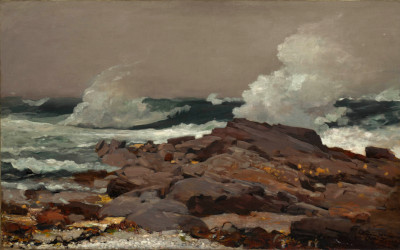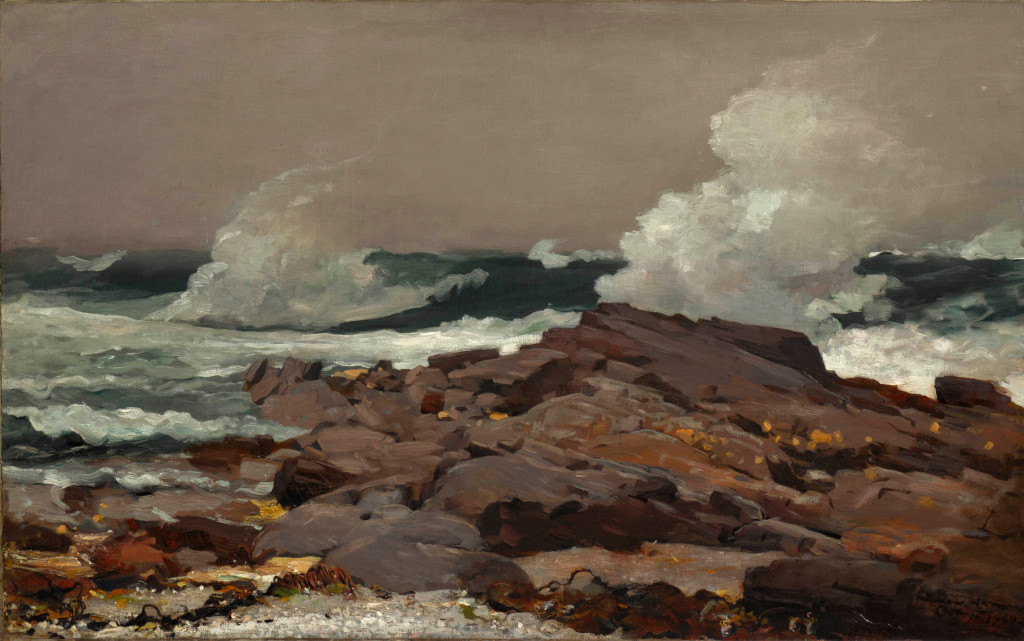The majority of Winslow Homer's seascapes would incorporate the tribulations of man within nature. Often we would see the full impact and danger poses by these environments, whilst at their rawest. Eastern Point, however, focuses only on the natural landscape.
Without the inclusion of humanity within this painting, we can appreciate the beauty of waves crashing against rocks without any danger involved. Within this composition we are upon the shore, looking out to a series of rocky juts which cover the lower half of the painting. We then find a slim strip of sea with waves splashing into the air, with also a dull tone of sky completing the piece across the top. This feels like a cold, windy day in which nature is allowed to take over. The palette is limited, and despite the relatively simple composition, the painting itself is still highly regarded and also shows that the artist could deliver art without the need for human figures within it. He would continue to release other artworks in this style, normally from the shoreline which observing rocks crashing and flying into the air, time and time again. He famously set up studio close to the coast in order to be able to access such environments in his latter period, where this genre became one of his favourites.
Eastern Point was completed in the year 1900, at which point Homer had entered the final decade of his lifetime. The work would eventually be acquired by the Clark family in 1954 and then make its way into the Clark Institute. Clearly, the family were big supporters of his work because they would acquire a number of artworks from his career. Indeed, in the 1950s several purchases were made in this regard, covering several different mediums in which Homer was involved, including several more oil paintings, some watercolours and also a number of study drawings. He is today regarded as one of the most influential American painters, particularly from the late 19th century, and so these acquisitions were entirely sensible and justified, with their respective valuations rising considerably in recent years. Additionally, with Eastern Point, the content is an ideal way of explaining the general approach of this artist and is consistent with how many people remember him today.
We do know that this piece was unveiled in 1901 and has been viewed many times by the public since then. It is, at the time of writing, on permanent display at The Clark Institute, and sits alongside a number of other important artworks from his career. The location for this piece was relatively close to his studio in Maine and it was this region in which many of his seascapes would be based. Homer was important in bringing international attention to American art and starting its transition away from being in the shadows of the alternatives in Europe. The colour scheme in this particular piece is memorable and well chosen, even though there are not the bright tones that you might find in some of his other related artworks. He was interested in changing conditions which along the shore could cycle through very quickly.





